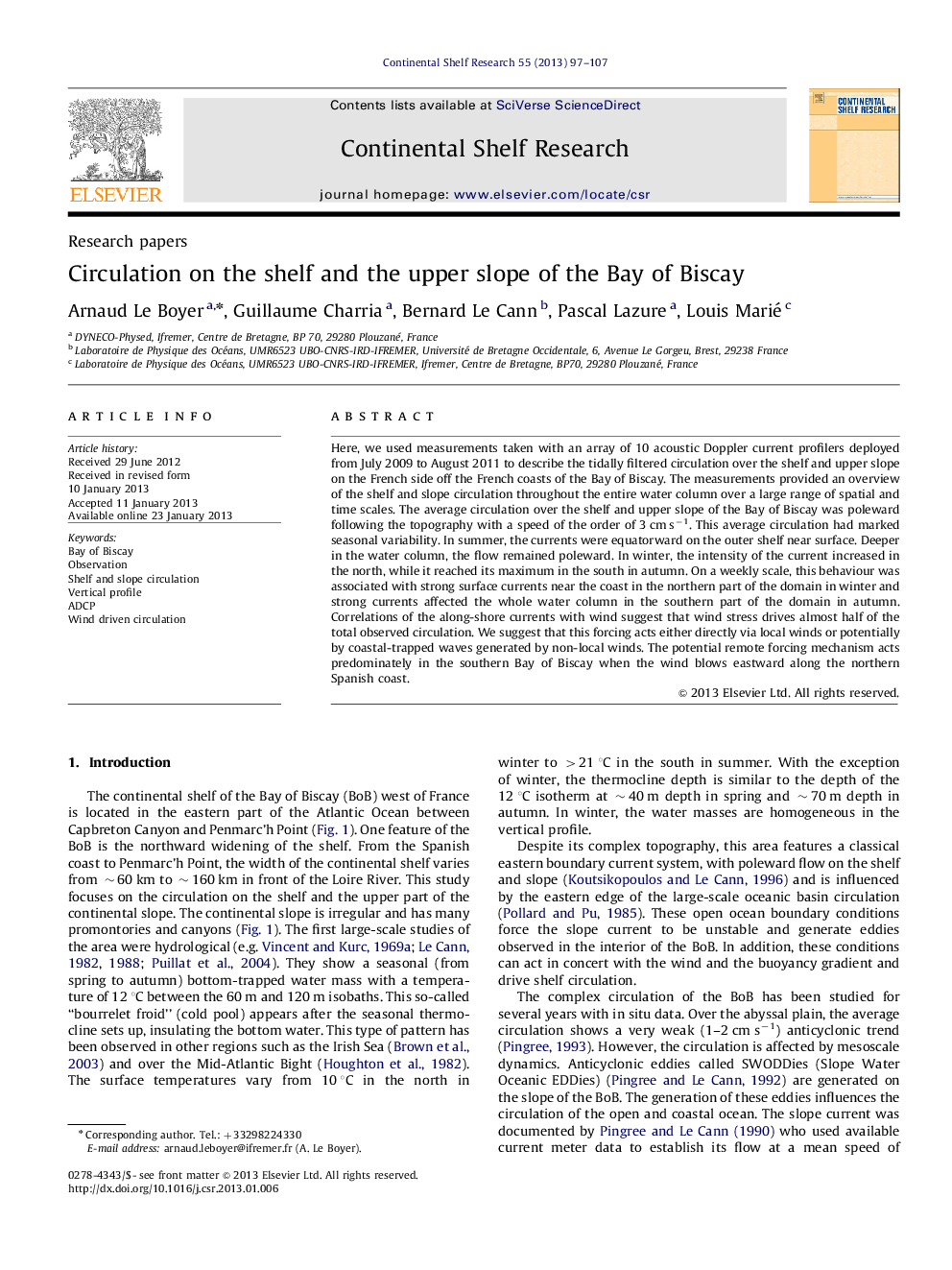| Article ID | Journal | Published Year | Pages | File Type |
|---|---|---|---|---|
| 4532198 | Continental Shelf Research | 2013 | 11 Pages |
Here, we used measurements taken with an array of 10 acoustic Doppler current profilers deployed from July 2009 to August 2011 to describe the tidally filtered circulation over the shelf and upper slope on the French side off the French coasts of the Bay of Biscay. The measurements provided an overview of the shelf and slope circulation throughout the entire water column over a large range of spatial and time scales. The average circulation over the shelf and upper slope of the Bay of Biscay was poleward following the topography with a speed of the order of 3 cm s−1. This average circulation had marked seasonal variability. In summer, the currents were equatorward on the outer shelf near surface. Deeper in the water column, the flow remained poleward. In winter, the intensity of the current increased in the north, while it reached its maximum in the south in autumn. On a weekly scale, this behaviour was associated with strong surface currents near the coast in the northern part of the domain in winter and strong currents affected the whole water column in the southern part of the domain in autumn. Correlations of the along-shore currents with wind suggest that wind stress drives almost half of the total observed circulation. We suggest that this forcing acts either directly via local winds or potentially by coastal-trapped waves generated by non-local winds. The potential remote forcing mechanism acts predominately in the southern Bay of Biscay when the wind blows eastward along the northern Spanish coast.
► Two years time series of the current in the water column from Penmarc'h to Capbreton. ► Strong surface current near Penmarc'h in winter. ► Barotropic strong currents close to Capbreton canyon for the autumn. ► A part of the variability close to the Capbreton canyon is remotely forced.
